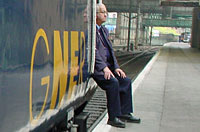 UK rail operator GNER (Great North Eastern Railways) has now completed the installation of Wi-Fi on all is trains, with the company claiming that they now own the world’s largest Wi-Fi fleet.
UK rail operator GNER (Great North Eastern Railways) has now completed the installation of Wi-Fi on all is trains, with the company claiming that they now own the world’s largest Wi-Fi fleet.
Pushed forward from its original completion date of strong demand from passengers, the service uses a roof-mounted satellite connection and a 3G/GPRS uplink, supplied and fitted by Swedish company Icomera.
The Wi-Fi service was first trialled along the 580-mile Inverness to Kings Cross East Coast mainline service in July 2004, and a £3.2 million investment has seen its entire 41-strong fleet become wireless-enabled.
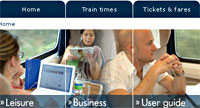 GNER reckons it will recoup the cost of installing its Wi-Fi service through increased passenger numbers, with the company confident that they’ll be able to tempt car users onto the trains from major metropolitan areas like Leeds, Newcastle and Darlington.
GNER reckons it will recoup the cost of installing its Wi-Fi service through increased passenger numbers, with the company confident that they’ll be able to tempt car users onto the trains from major metropolitan areas like Leeds, Newcastle and Darlington.
The service is priced at £2.95 for a 30-minute internet session, £4.95 for an hour or £7.95 for three hours for second class standard class passengers customers, with access free for first class travellers.
Wi-Fi has been proving a hit with passengers, with a host of train operators getting in on the act: passengers travelling from Brighton to London have been able to connect wirelessly for some time, while Virgin Trains is set to add Wi-Fi to their West Coast mainline fleet in 2007.
“Wireless Internet has immense potential for both business and leisure users, and we’re very encouraged by the usage levels and positive feedback from passengers,” said Jonathan Metcalfe, GNER’s chief executive officer.
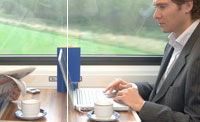 One thing Metcalfe may not be so encouraged by is the rather parlous state of GNER’s parent company, the Caribbean-based Sea Containers.
One thing Metcalfe may not be so encouraged by is the rather parlous state of GNER’s parent company, the Caribbean-based Sea Containers.
The company filed for protection against bankruptcy in the USA a fortnight ago, although this shouldn’t – in theory – affect the UK company.
However, GNER warned the UK government last week that it needs to renegotiate its operating licence or it’ll throw all its toys out of the pram when it gets smacked down with a thumping great penalty clause for not meeting the year’s performance targets.
 The influential UK thinktank, Institute for Public Policy Research (ippr), announced on Sunday that they thought that UK copyright law should be updated to include a “private right to copy,” clause to legalising the personal copying of CDs to portable music players. They also recommend that there should be no extension to the current 50-years copyright term.
The influential UK thinktank, Institute for Public Policy Research (ippr), announced on Sunday that they thought that UK copyright law should be updated to include a “private right to copy,” clause to legalising the personal copying of CDs to portable music players. They also recommend that there should be no extension to the current 50-years copyright term. Steve Wozniak, Apple co-founder and genius hardware builder, is currently on a book tour around the UK promoting …. not surprisingly, his book, iWoz. As you probably know, he’s commonly referred to as Woz.
Steve Wozniak, Apple co-founder and genius hardware builder, is currently on a book tour around the UK promoting …. not surprisingly, his book, iWoz. As you probably know, he’s commonly referred to as Woz.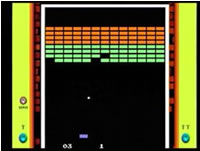 On the iPod and its expected longevity, Woz pins it, “Will the iPod always remain that large? Walkmans seemed to come and then go away. I think Apple’s making the most out of the lifespan.”
On the iPod and its expected longevity, Woz pins it, “Will the iPod always remain that large? Walkmans seemed to come and then go away. I think Apple’s making the most out of the lifespan.”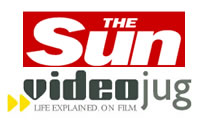 Video howto site VideoJug has signed a deal with UK tabloid, The Sun, to provide ten video clips to them weekly.
Video howto site VideoJug has signed a deal with UK tabloid, The Sun, to provide ten video clips to them weekly.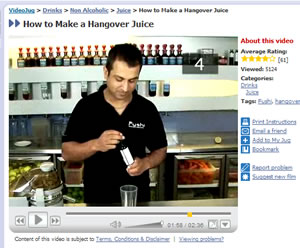 Much of the production of the video is carried out in Spain where they aim to produce up to 500 clips per month. They are also soliciting members of the public to upload their videos to add to the pile.
Much of the production of the video is carried out in Spain where they aim to produce up to 500 clips per month. They are also soliciting members of the public to upload their videos to add to the pile.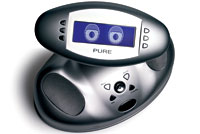 The latest digital radio listening figures have come out in the UK. Everyone involved in the DAB radio business as they’ve all gone up.
The latest digital radio listening figures have come out in the UK. Everyone involved in the DAB radio business as they’ve all gone up.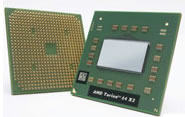 AMD, the second largest microprocessor manufacturer has complete the purchase of graphics, chipset and CE specialist ATi Technologies in a deal worth around $5.4Bn.
AMD, the second largest microprocessor manufacturer has complete the purchase of graphics, chipset and CE specialist ATi Technologies in a deal worth around $5.4Bn. The capabilities of graphics processors have been gathering pace over the recent years to the point where they come close to rivaling the main processor themselves.
The capabilities of graphics processors have been gathering pace over the recent years to the point where they come close to rivaling the main processor themselves. Cellular phone provider T-Mobile US is offering a service, HotSpot @Home, giving unlimited calls to US phones via WiFi. This in itself isn’t big news, but what is significant is that callers leaving the range of the WiFi will automatically switch to their cellular service. Initial roll-out is limited to Seattle.
Cellular phone provider T-Mobile US is offering a service, HotSpot @Home, giving unlimited calls to US phones via WiFi. This in itself isn’t big news, but what is significant is that callers leaving the range of the WiFi will automatically switch to their cellular service. Initial roll-out is limited to Seattle.
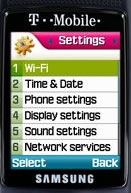 T-Mobile is the mobile communications subsidiary of Deutsche Telekom, the German telco incumbent.
T-Mobile is the mobile communications subsidiary of Deutsche Telekom, the German telco incumbent. Coming straight from the you-must-be-having-a-laugh folder, news reaches us that the Los Angeles Scout group is introducing a new merit award — the Respecting Copyright Patch. We kid you not.
Coming straight from the you-must-be-having-a-laugh folder, news reaches us that the Los Angeles Scout group is introducing a new merit award — the Respecting Copyright Patch. We kid you not. European mobile phone users are far more likely to use their handsets to access the web than their US counterparts, according to a new comScore Networks study.
European mobile phone users are far more likely to use their handsets to access the web than their US counterparts, according to a new comScore Networks study.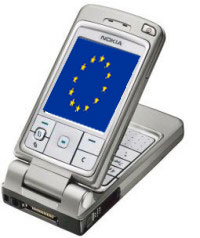 Portal sites were the most popular destinations for mobile surfers, with Google, Yahoo! and MSN leading the way, with branded Web sites set up by the phone operators, such as Vodafone, o2 and T-Mobile also proving a hit.
Portal sites were the most popular destinations for mobile surfers, with Google, Yahoo! and MSN leading the way, with branded Web sites set up by the phone operators, such as Vodafone, o2 and T-Mobile also proving a hit.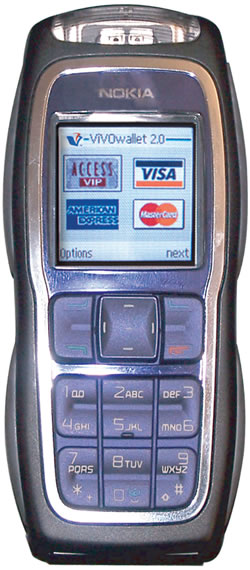 An NFC payment system is on trial in Amsterdam allowing people taking part to make purchases using their mobile phone.
An NFC payment system is on trial in Amsterdam allowing people taking part to make purchases using their mobile phone. Approximately 100 selected JCB cardholders are now enjoying fast, easy, and convenient payments with Mobile J/Speedy at selected merchants, where they used to pay by cash.
Approximately 100 selected JCB cardholders are now enjoying fast, easy, and convenient payments with Mobile J/Speedy at selected merchants, where they used to pay by cash.